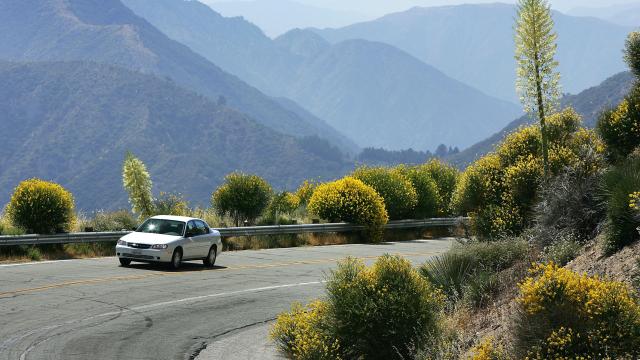Last September, California Gov. Gavin Newsom made waves when he announced plans to ban the sale of fossil fuel-powered cars by 2035. A new state study shows the challenges the state will face in cutting emissions down to zero.
Right now, California is home to some 763,000 electric vehicles, which is 45% of all the electric vehicles in the country. But that’s a tiny fraction of what it can expect. By 2035, if the state phases out sales of internal-combustion engine-powered cars altogether, the report expects some 8 million EVs will be on the state’s roads.
All those electric cars will, of course, need to get regularly plugged into charging stations. Right now, the state has 67,000 chargers available for public use, but that’s nowhere near enough to support California’s EV future. Based on executive orders passed by Newsom’s predecessor, former Gov. Jerry Brown, the state is supposed to have 250,000 chargers by 2025 and a whopping 968,000 by 2030.
Without urgent action, the report from the California Energy Commission says the state will miss those benchmarks. The state analysts found that there are currently 121,000 chargers that are slated to be built, but that still leaves 62,000 additional ones California must erect within the next five years.
After that, the state will have to further speed up its plans to build charging stations, because to meet Newsom’s 2035 goal, the number of chargers would have to rise to 1.5 million. And that’s just for personal vehicles — the report says in 15 years, the state will also need charging points to support its expected 180,000 all-electric delivery vans, box trucks, and trailer trucks. That will require an additional 157,000 charging stations.
A big reason for the state’s too-slow buildout of charging stations, the report says, is that a key source of funding to build them is revenue from state vehicle licensing fees and smog check fees. But developers have applied for those funds in far greater quantities than they’re available — according to the report, “applicants have requested more than $US300 ($390) million in rebates, but only about one third of those could be funded.”
The report says it’s high time for the state to pour more funds from more sources into erecting charging stations to support its expected new cars. “Significant public investment is needed now,” it says.
Supporting all these new charging stations, the report says, will also put a ton of pressure on California’s electricity grid. The report authors found that to keep pace with Newsom’s 2035 goal, by 2030, the state will need an additional 3,600 megawatts of power to be available during a peak charging periods, beginning “around midnight on a typical weekday.” During those hours, that would increase California’s electricity demand by up to 15%.
Midnight may seem like a strange time to charge a vehicle, but the analysts assumed residents will plug in their cars overnight, and that California would keep pricing energy differently at different hours. Under these “time of use” electricity prices, the price of energy drops steeply at midnight, and the authors assumed residents will want to take advantage of that. The problem is, around midnight, the sun is down. California is the top U.S. user of solar power, but that power isn’t available when it’s dark. So the state will likely have to build new energy storage systems, like batteries, to save solar power for the hours when its needed — yet another challenge in the quest to go diesel car-free.
The report raises questions about the Biden administration’s plans to transition to electric vehicles. President Joe Biden has promised to make sweeping policy changes in order to build out electric vehicle infrastructure, including restoring the full federal tax credit for electric vehicle purchases. But he’s also only promised to install 500,000 chargers by 2030, which is only a third of the total amount that the report found will be needed for California alone by then. And he hasn’t yet said much about how the country will generate additional energy sustainably if the new EV fleet needs it. If he’s serious about phasing the U.S. out of fossil fuel-powered cars completely, the report suggests Biden may have to build out his policy plans even more, and promise even more investment.
